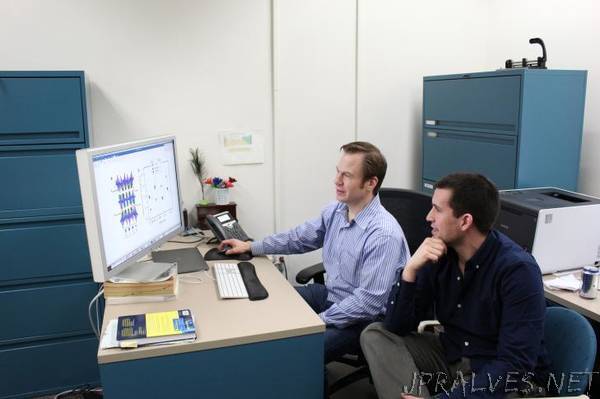
“University of Wisconsin-Madison engineers have added a new dimension to our understanding of why straining a particular group of materials, called Ruddlesden-Popper oxides, tampers with their superconducting properties.
The findings, published in the journal Nature Communications, could help pave the way toward new advanced electronics.
“Strain is one of the knobs we can turn to create materials with desirable properties, so it is important to learn to manipulate its effects,” says Dane Morgan, the Harvey D. Spangler Professor of materials science and engineering at UW-Madison and a senior author on the paper. “These findings might also help explain some puzzling results in strained materials.”
Superconducting materials could make the nation’s power grid much more efficient, thanks to their ability to conduct electricity with zero resistance. The substances also enable MRI machines to see inside patients’ bodies and levitate bullet trains above the tracks because of the Meissner effect.
“This work is a good example of how basic research can influence developing transformative technologies through systematic understanding of material behaviors by close interaction between theory and experiment,” says Ho Nyung Lee, a distinguished scientist at the Department of Energy’s Oak Ridge National Laboratory who led the research.
Most materials only become superconductors when they are very cold—below a specific point called the critical temperature. For superconductors composed of thin films of the Ruddlesden-Popper material La1.85Sr0.15CuO4, that critical temperature varies substantially depending on the conditions under which the films were grown.
“The prevailing opinion has been that strain makes it thermodynamically easier for oxygen defects that destroy the superconducting properties to form in the material, but we have shown that differences in the kinetic time scales of oxygen-defect formation between tensile and compressive strain is a key mechanism,” says Ryan Jacobs, a staff scientist in Morgan’s laboratory and a co-first author on the paper.
Oxygen defects are important because the amount of oxygen contained within a material can alter its critical temperature. The most obvious idea was that strain might impact properties by adjusting how much energy is needed for oxygen defects to appear.
While this effect does occur, Jacobs and colleagues at Oak Ridge National Laboratory demonstrated that strain doesn’t just affect how easily defects form, but also the rate at which oxygen moves in and out of the material. These results suggest that some of the most important strain responses may be a result of changes in kinetic effects.
“Recognizing that kinetics plays a key role is very important for how you create the material,” says Morgan.
The scientists created the materials they studied by growing crystalline thin films on top of two different supporting surfaces—one compressed the resulting thin films while the other stretched them out to cause tensile strain.
Strikingly, the tensile-strained materials needed much colder temperatures than the compressed films to become superconductors. Additionally, tensile strain caused the materials to lose their superconducting properties more quickly than the compressed materials.
After extensive calculations, the scientists concluded that thermodynamic effects (via the defect formation energy) alone couldn’t explain the dramatic results they observed. By applying their expertise in computational simulation and the computational modeling method known as density functional theory, the researchers narrowed in on kinetics as playing a dominant role.
“This is the first window on strain altering how oxygen moves in and out of these materials,” says Morgan.
Currently, the researchers are exploring other methods to optimize Ruddlesden-Popper oxides for possible use in superconducting-based devices, fuel cells, oxygen sensors and electronic devices such as memristors. They are also investigating how the findings might be applied to a closely related group of materials called perovskites, which are an active research area for the Morgan group.
The paper was also featured as a Nature Communications Editor’s Highlight.
This work was supported by the U.S. Department of Energy Office of Science and National Science Foundation. It used the Advanced Photon Source, a DOE Office of Science User Facility, and the Extreme Science and Engineering Discovery Environment, which is supported by the National Science Foundation.”
